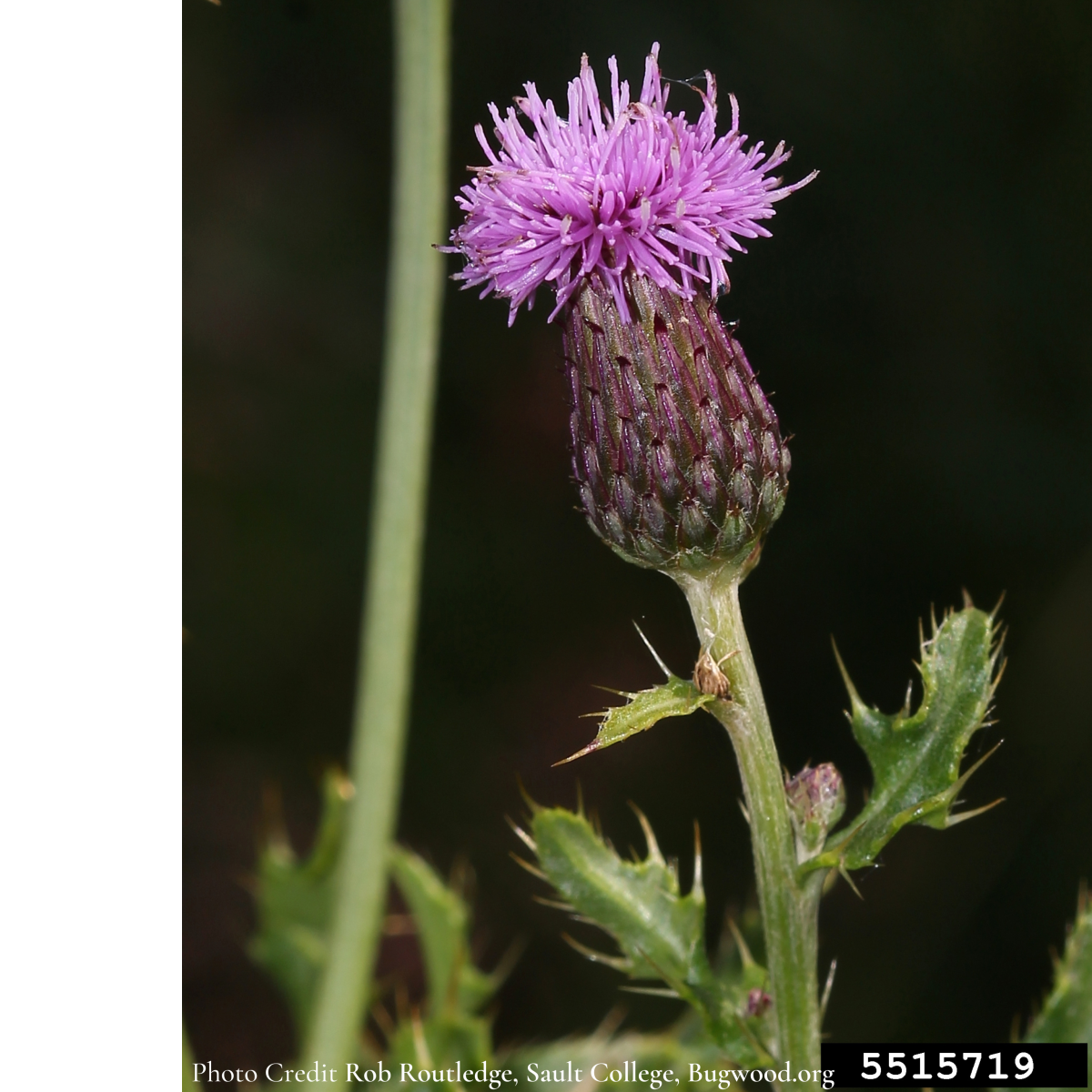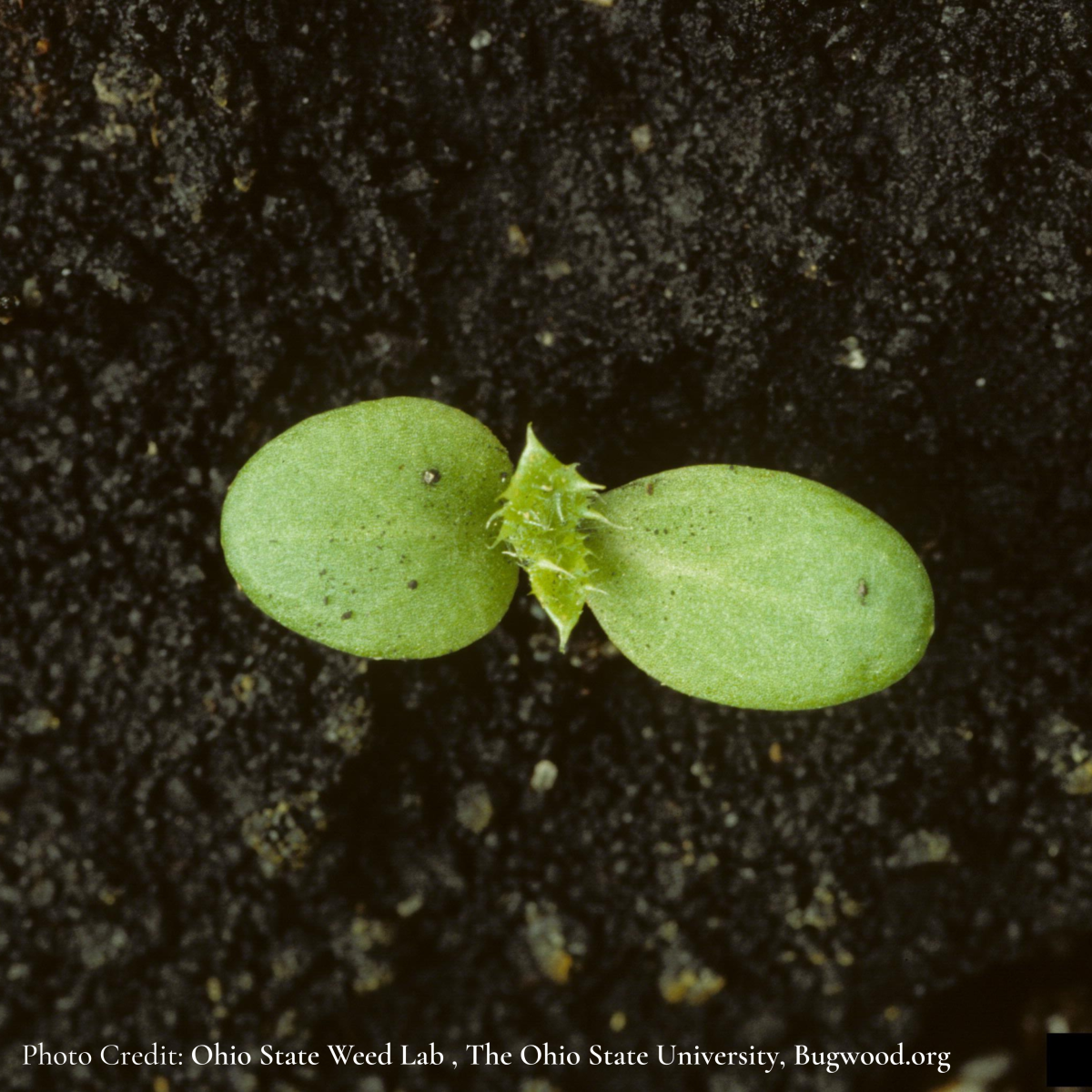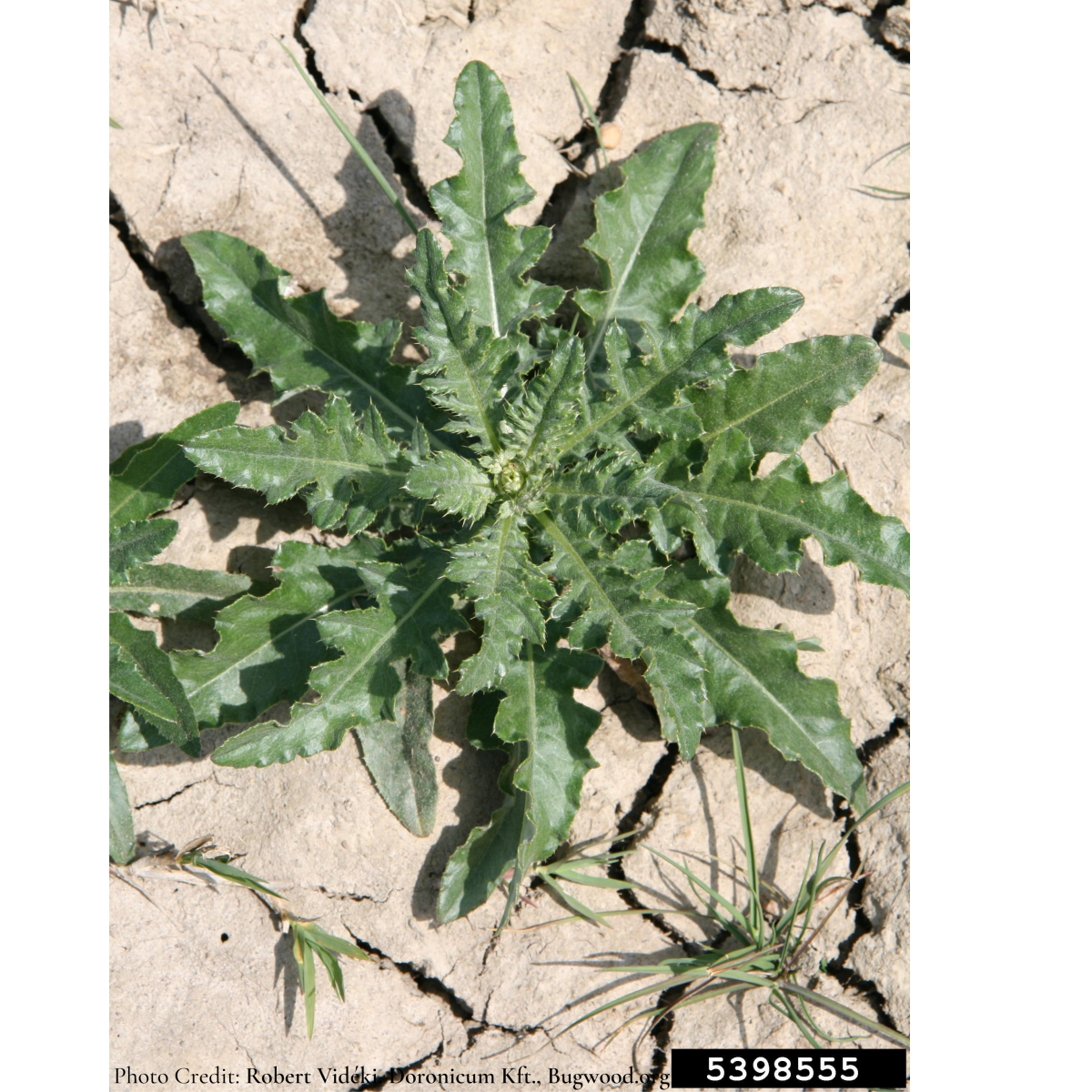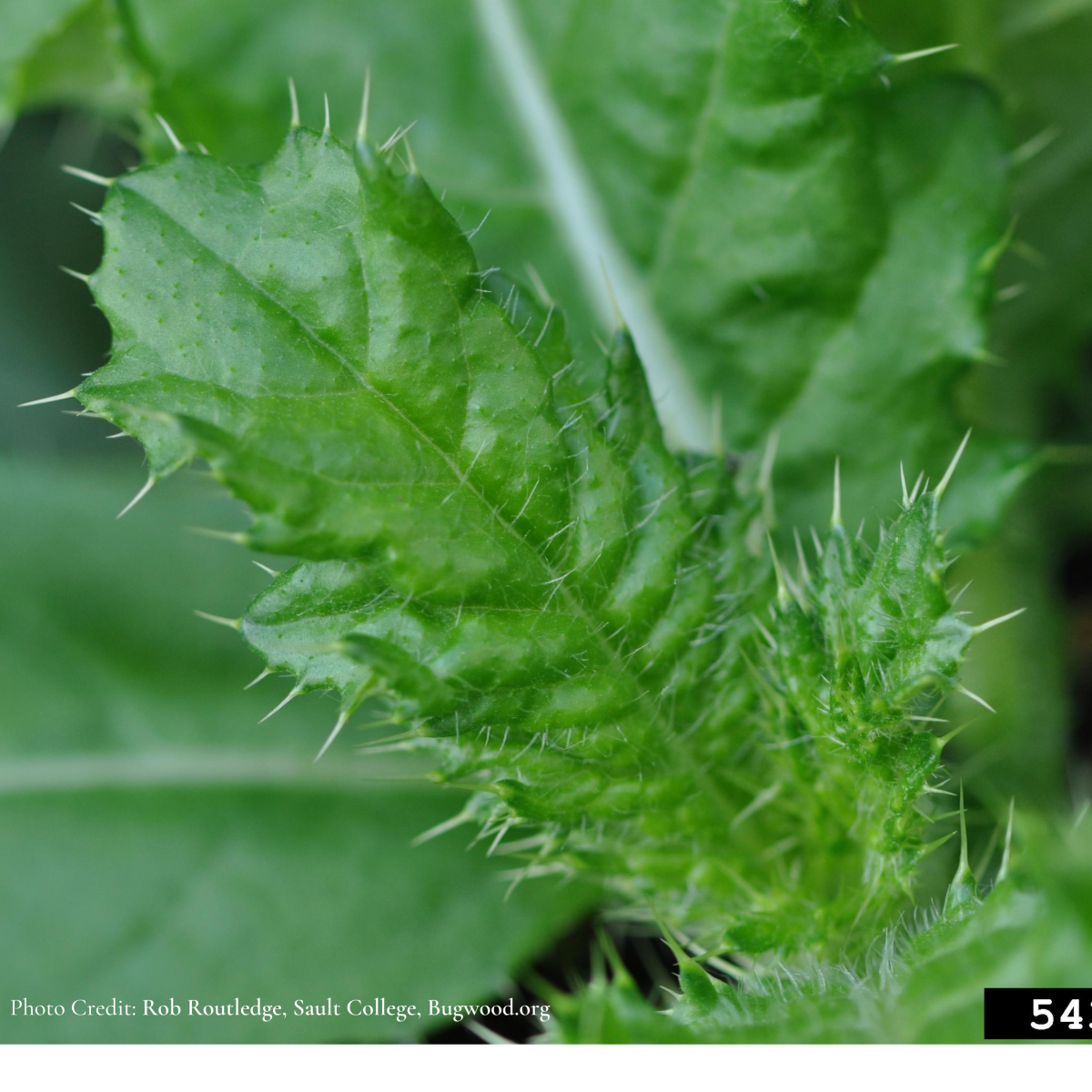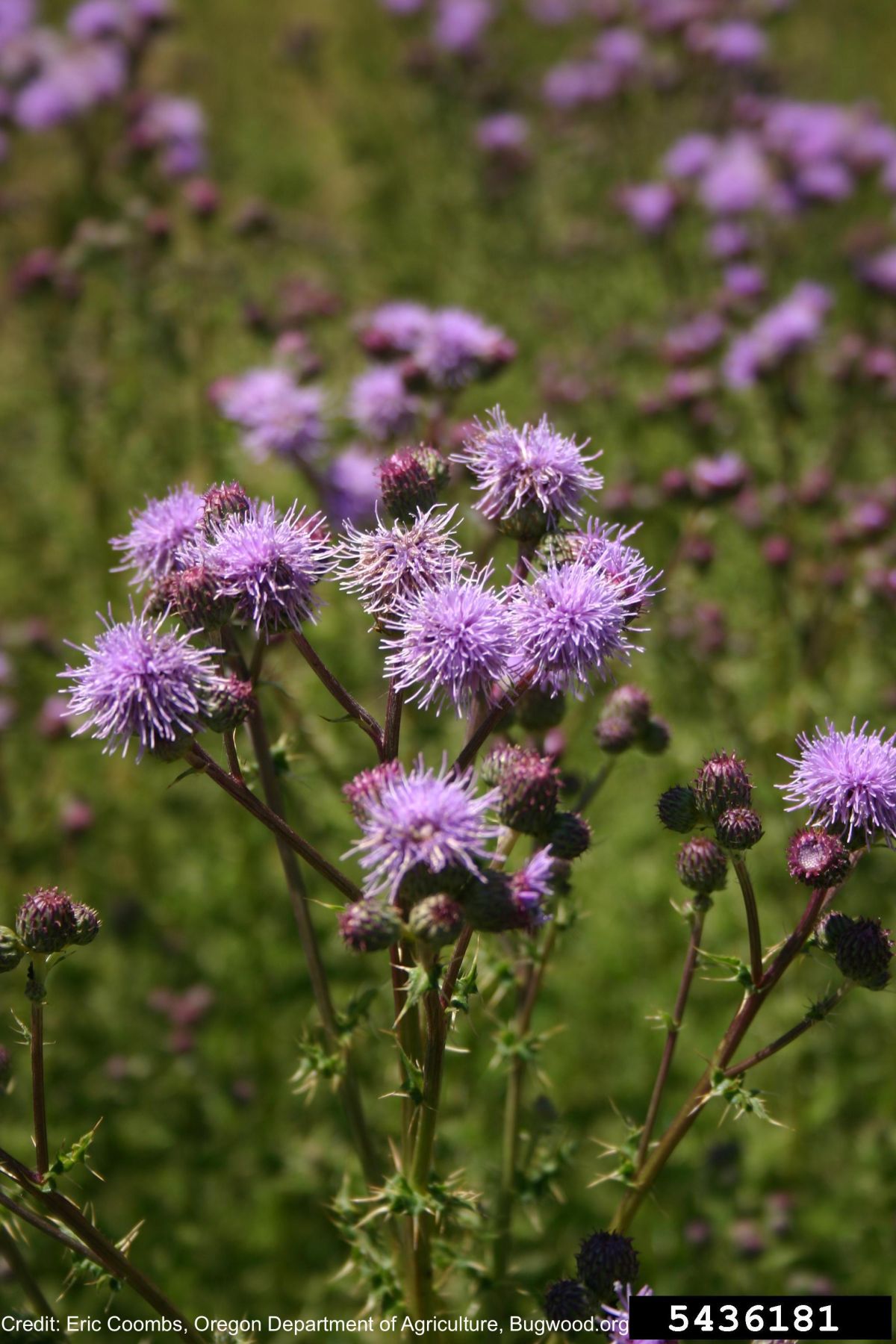
General: An erect plant with both male and female flowers.
Height: It grows up to 1.2m tall.
Flowers: Clusters of pinkish-purple (sometimes white) flowers at the top of branches and have a sweet vanilla scent. Under the flower petals is overlapping green bracts.
Leaves/Stems: Leaves are 5-15cm long with spines at the tips and prickly on the surface. Wooly hairs can be found under the leaf. Leaves are dark green and stalkless. Stems are branched at the top.
Root: Deep, creeping roots with an extensive network.
Canadian Thistle, creeping thistle, field thistle
Look alike plants include Bull Thistle, Scotch Thistle, and other thistles. Contact LRISS for assistance with identification.
Where did it come from? Originally from Eurasia and accidently introduced to North America in the 1600’s.
Where does it grow here? It is widespread across BC. It typically grows in disturbed areas including roadsides, logging roads and pasture edges. Infestations can also be found in wetlands, streams and ditchlines.
Reproduction: The main mode of reproduction is through the creeping root system. One plant can produce up to 40,000 seeds that can remain viable in the soil for up to 21 years.
When does it grow, flower & seed? Sprouts in April-May. Flowers June-July. Seeds August-Sept.
Spreads By: Seeds can spread via wind and birds. It can be moved in mud or gravel that contains seed.
Plant Type: Perennial.
- Canada Thistle creates dense stands that can take over areas.
- The infestations can cause problems with tree seedling growth in forest plantations.
- Infestations can crowd out native plants that wildlife & livestock need for food.
- Review your property regularly for this species.
- Treatment: Remove small patches before it flowers & sets seed. Repeated removal, digging, mowing and hand cutting is necessary. The root should be removed. A biocontrol seed weevil has been released on infestations in BC and has shown promise in suppressing this thistle.
- Cover bare patches or disturbed soil by planting or seeding with non-invasives.
- Check areas where you have removed invasives for any new plants that year and in future growing seasons.
- Dispose of invasive plants responsibly. Bag them for disposal at the local landfill. Composting and burning is not recommended.
- Contact LRISS for specific treatment recommendations including biocontrol.
Southern Interior Weed Management Committee. 2016. Invasive Plants of the Southern Interior BC.
Okanagan Invasive Species Online website
E-Flora BC: Electronic Atlas of the Flora of British Columbia
Photo Gallery
